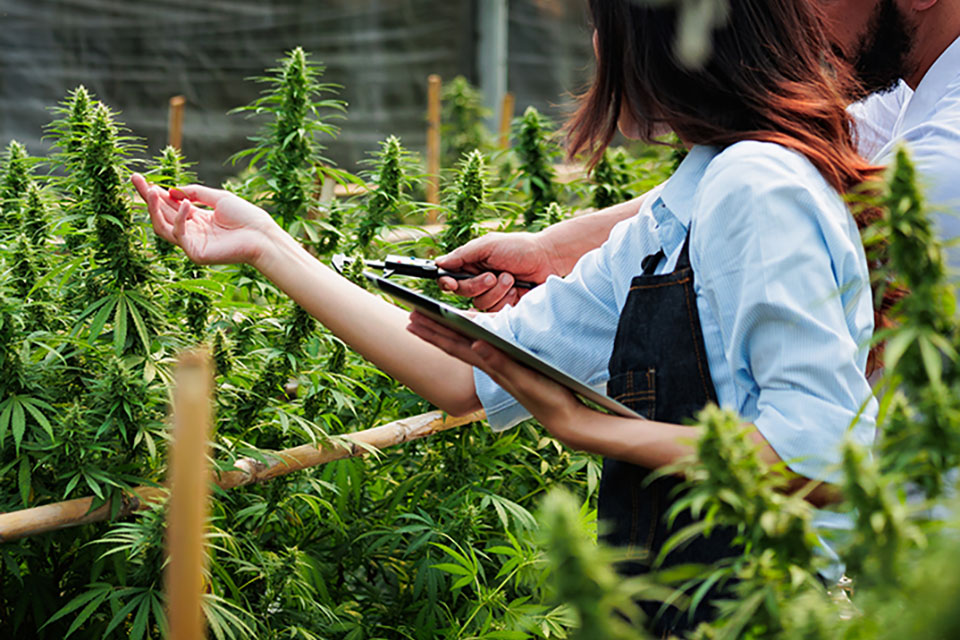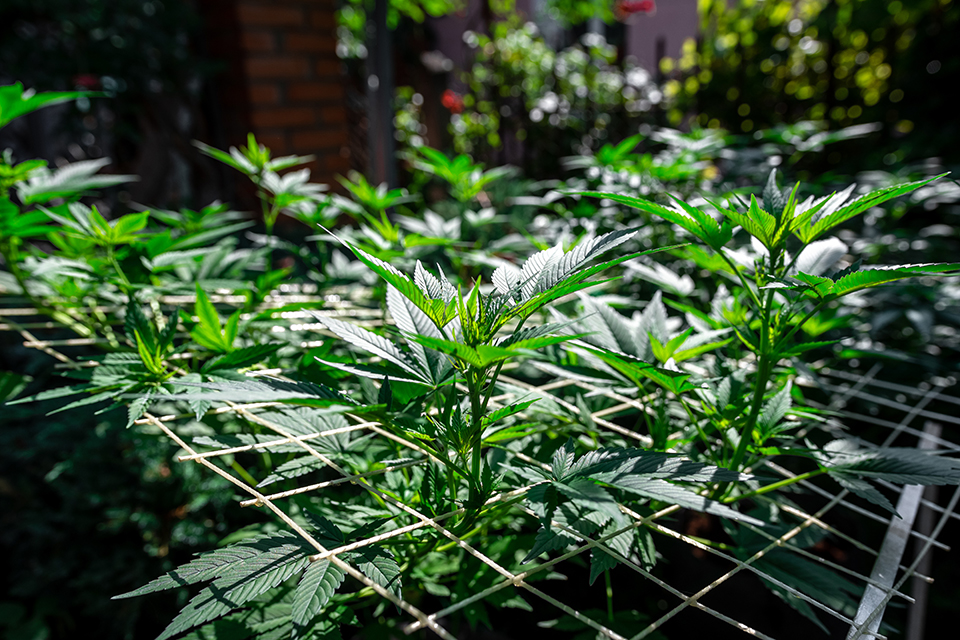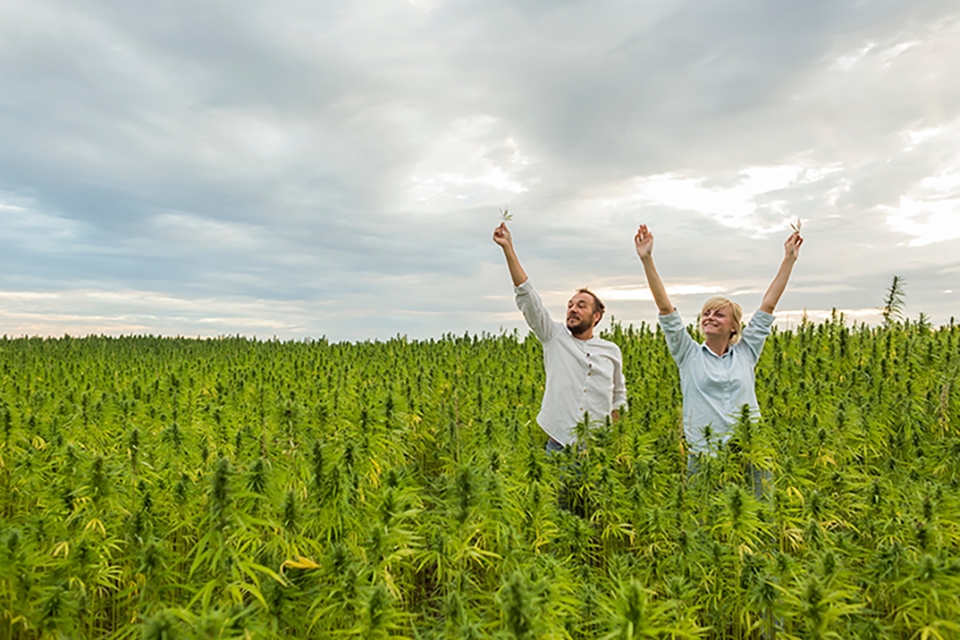
Six Growing Techniques That Maximize a Cannabis Crop’s Yield
With more countries legalizing marijuana, cannabis growing has become big business. It takes skill and experience to produce large, robust harvests consistently, but even newcomers can grow cannabis once they learn the techniques used by long-time growers. It may take time to create a major business, but you do not have to be a professional to grow our reliable American seeds. Anyone can produce a healthy yield once they learn how to create an optimal growing environment. Once you learn some of the more advanced growing techniques of cropping, pruning, topping, and training your cannabis plants – that is when the real magic begins!
1) Create the Best Growing Environment
Most commercially grown cannabis is cultivated in climate-controlled greenhouses. This is especially true for the drier states such as Arizona or Utah. Another great option is growing indoors, which allows you a great deal of control. You do not have to spend a fortune to get started with a small grow tent and a few lights. Do not forget about the ventilation gear as well, which is critical to maintaining an optimal growing environment.
If you already live in a state that has an ideal climate for outdoor growing, then why not dedicate a part of your garden to growing some amazing weed? Each environment has a different effect on the plants, and it is important to adjust to get the best results. If you are planting outdoors, choose an area that gets a lot of direct sunlight. Rooftops, balconies, and secluded private gardens can work since they offer privacy as well as a healthy atmosphere.
Indoor pot plants need more maintenance to produce their best buds. Their triangular shape works well outdoors but is not as effective with grow lights. Lower leaves may not get enough light to thrive. However, you can still do well if you use professional pruning techniques.
2) Careful Pruning Is Essential
Experienced gardeners typically prune their plants to get the maximum number of fruit or flowers. Similarly, marijuana growers use selective pruning methods to ensure that even small numbers of plants produce maximum yields.
Cannabis plants that are left to grow naturally develop extra branches they can’t support, which causes some leaves to die and fall off. You can improve that process by pruning them instead. However, it is important to use the right techniques to avoid harming plants.
Correct pruning means precisely trimming the right growth. Search for branches that have long spaces between nodes because it is a sign that they do not get enough light. Also, remove branches that are lower than main shoots since they will become energy drains. Some professionals remove leaves, but it is a risky practice that can hurt plants. Many experienced growers stimulate growth by cutting leaves in half. They might also tie them up to get the same results.
Despite the many benefits of pruning, it can stress plants if it is not done carefully. Cannabis plants release the stress hormone jasmonic acid, which inhibits growth. You can protect your crop by pruning over time. Plants can withstand some stress, but too much is dangerous.
Effective pruning requires careful planning. You need to trim during the vegetation period of each plant’s life process. That ensures plants can recover and grow large leaves. Wait three days after pruning if you want to force flowering. Continue to monitor plants and make sure they have the right amount of water and nutrients to stay healthy.
3) Super Crop for Stronger Plants
Professional cannabis growers across the nation often use a form of pruning called super cropping. The technique involves bending branches until they are nearly broken. Breaking stems increases nutrient intake, which helps maximize yields. When broken plants heal, they have stronger foundations and thicker stems.
If super cropping sounds harsh, that’s because it is designed to be. It is sometimes called “high-stress training.” During super cropping, you damage the plant’s inner tissue, which detours growth hormones. Before trying this method, make sure you have the kind of plants that can withstand the stress. Strains that stand up to the treatments become stronger, bushier, and produce more buds.
You will not cut branches when you are super cropping cannabis. Plants should be 3-4 weeks old and in a vegetative phase. Select an area between the 3rd and 4th nodes. Hold the branch between your thumb and pointer finger and then pinch and twist it. Do not break the branch. The pinched area might droop but will heal. If it stands up after super cropping, you did not pinch it enough. Beginners should try the method on a few leaves at first, to make sure a plant tolerates it well.
4) Monster Cropping Leads to Endless Plants
Both amateur and professional growers routinely monster crop to create large plants and healthy harvests. Monster cropping is the practice of creating clones from flowering cannabis plants. It works on indoor and outdoor plants.
Home growers use monster cropping because it eliminates the need for mother plants. They continuously create new plants while cultivating current harvests. Even if you have limited growing space, you can use the technique to grow an unlimited number of plants. Each produces extra branches and nodes, which is one of the reasons they are called cannabis monsters.
You can monster crop about 21 days into a plant’s flowering stage. Choose a soft lower branch that will root quickly. Cut across the stem. Place the cutting in a container of water to ensure no air enters its delicate system. You can use a humidity dome, hydroponic setup, or propagation bubbler to root a clone. Use a small CFL bulb to provide vegetative light. Training techniques such as applying gentle heat or tying down branches can also encourage growth.
5) Top Your Crops for Best Results
Trimming the top of a tall cannabis plant is a practice known as topping and is an easy way to increase the number of colas. Topping encourages plants to grow more thick and get fuller around the sides. The process changes the growth pattern, causing plants to become bushy instead of getting taller and skinnier. Eventually, they take on the shape of inverted pyramids.
If you want to maximize your yield, it is best to use topping along with other growing methods. It is an easy technique. Cut a young plant between nodes at the top of the stem. You should cut just above leaves on the next node. It is best to top plants when they have four or five nodes.
Growers normally top plants’ newest nodes but cutting a tip off any stem may also be called topping. Topping the main shoot makes shoots directly under it grow faster and get bigger. There is the chance that lower shoot growth could slow down after topping. You can prevent the problem by repeating the technique several times.
Be aware that topping will affect plants’ hormones. It can result in slower growth while plants adjust, and they can take a week to recover. Since hormones travel to the roots of cannabis plants at night, professional growers sometimes top at night to minimize the impact. Avoid topping very young plants because it can stunt their growth.
6) Use Fimming to Produce Bushier Plants
Fimming is a less traumatic alternative to topping, although it is similar. Instead of taking off the entire top, you give your plant a “haircut.” It is a technique for training young plants. Fimming spurs your plants to become bushier, encourages the development of extra flowers and results in more lateral branching. Fimming originally evolved when people had problems topping. Now it Is regular practice in Many grow shows from Missouri to Tennessee
The technique is less stressful to plants than topping because it involves pinching and not cutting. You will remove less growth. Unlike some pruning methods, it will not affect plants’ height. Fimming should be done during the vegetative phase of a plant’s lifecycle. Results will not be as consistent as other techniques, and new colas will not be evenly spaced.
One benefit of fimming is its simplicity. Just pinch the top of a plant at the point of the newest growth, making sure to leave some behind. If you are successful, four new colas will develop. Unsuccessful attempts produce two or three.
Choose plants with three or four nodes for fimming. Taller plants will not produce ideal results. Although most growers pinch plants, you can get the same results by cutting. You need to leave at least 20% on a plant to ensure a healthy recovery. Cut in a circle so that remaining growth looks like a cup. The small amount of new growth makes a plant think it needs to grow four shoots rather than two.
Plants that have been fimmed look a little peculiar, but there is no need to worry. You will know they are healthy when you see signs of thickening at the base of stems. The technique does not slow growth because so little of the plant is removed. You can expect to see results in a short time. Try fimming your greenhouse plants in Florida to see how they respond. You can even leave a similar plant untreated as a control, then you can compare at harvest time and see how much benefit you actually see from training the plants this way.
Closing Thoughts
It takes skill and experience to grow healthy cannabis plants for personal or commercial purposes, but nearly everyone can learn how to produce healthy harvests. Professional growers offer plenty of tips that help ensure maximum yields and new growers can use expert advice to create the best environment for crops. Professional techniques will also help growers learn to prune, crop, and train plants to ensure they produce bountiful harvests. Contact us online to inquire about the best seeds you can grow with these advanced training techniques.



